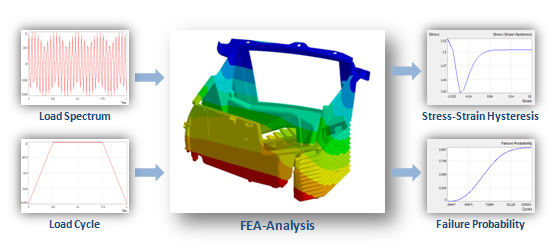Fatigue Life Prediction
Predicting fatigue life has been one of the most important problems in design engineering for reliability and quality. They have several practical uses: rapid design optimization during development phase of a product and predicting field use limits as well as failure analysis of product retuned from the field or failed in qualification test. Fatigue analysis focus on the thermal and mechanical failure mechanism. Most fatigue failure can be attributed to thermo-mechanical stresses caused by differences in the coefficient of thermal and mechanical expansion. The fatigue failures will occur when the component experiences cyclic stresses and strains that produce permanent damage. There are 2 major components to fatigue failure: the initiation of fatigue cracks and the propagation of these cracks under cycling load.
The fatigue life prediction consists of four primary steps. First a theoretical or constitutive equation, which forms the basis for modeling, is either defined or chosen. Appropriate assumptions need to be made in constructing the constitutive equation. Second, the constitutive equation is translated into FAE program and a model created. The FEA program calculates the predicted stress-strain values for the system under study and returns stress values for the simulated conditions. Third, the FEA results are used to create a model predicting the number of cycles to failure. Fourth, the model or results must be tested and verified by measurement data.

Case Studies



